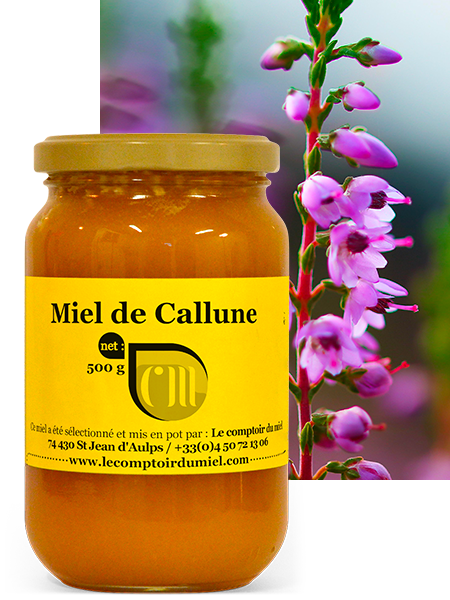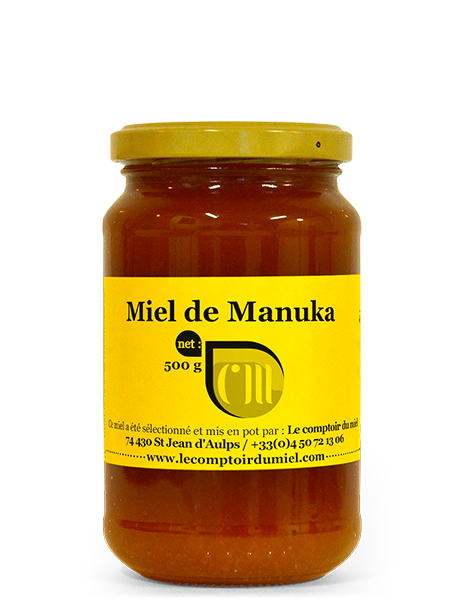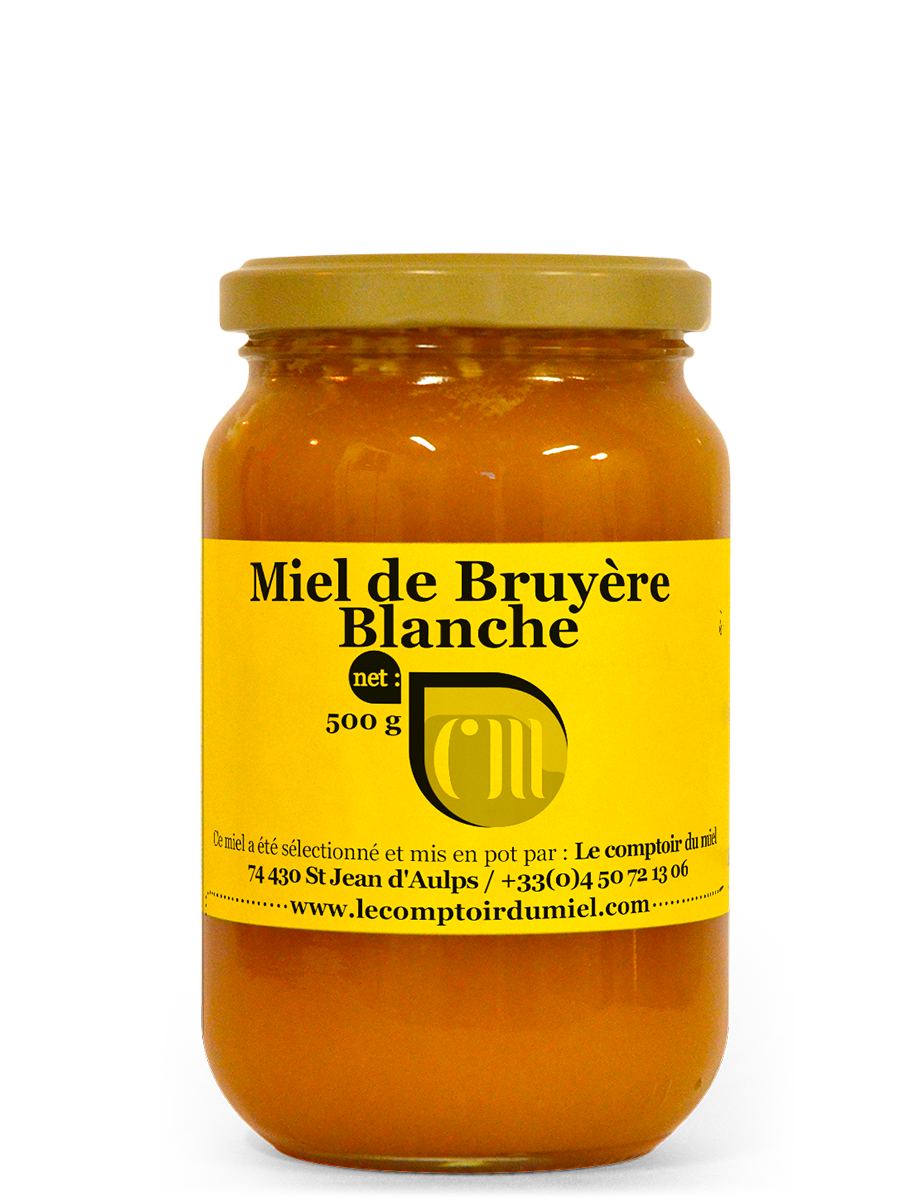Harvested in September and October, it is produced by our beekeepers in the Ariège region (Haute-Ariège) using equipment known as picoteuse. The picoteuses were invented in the 18th century to extract thick, dense honey. Callune honey, which has a very high water content, has a dense consistency that requires support to extract it from the comb where the bees made and stored it.
It can also be enjoyed directly from the shelf. Callune heather (also known as common heather ) is a summer-flowering perennial honey plant. Its flowers are purplish-pink and grouped in spikes. Callune heather grows easily in undergrowth, and can be found both in the countryside and in the mountains, where it provides food for sheep and deer in winter.
In Haute-Ariègethe territory of our mountain beekeepers, bees pollinate callune heather at the edge of the forest on plateaus at altitudes of between 1,300 and 2,500 meters, between the hills and the Pyrenees. They leave the plateaus at 1,300 metres at dawn to gather pollen from the callune located on the plateaus at higher altitudes. It’s a rare spectacle of vivacity and freedom that the bees give us before harvesting this rare monofloral artisanal honey.



